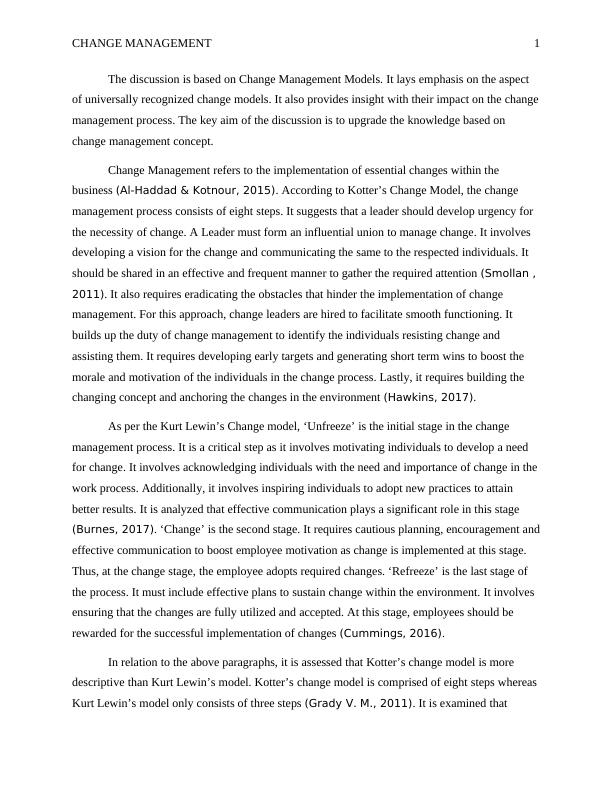Knowledge Based on Change Management Concept
Added on 2022-09-14
4 Pages1234 Words13 Views
End of preview
Want to access all the pages? Upload your documents or become a member.
Comparison between Kotter’s and Lewin’s model change.
|6
|1299
|50
Comparison of Kurt Lewin's Three-Step Change Model and Kotter's Eight-Step Change Management Model
|8
|2256
|293
Change Management Report 2022
|7
|1610
|18
HR's role in Change Management
|5
|1079
|91
THE STRATEGIC MANAGEMENT
|6
|1419
|30
Healthcare Strategic Plan (pdf)
|8
|2022
|153


